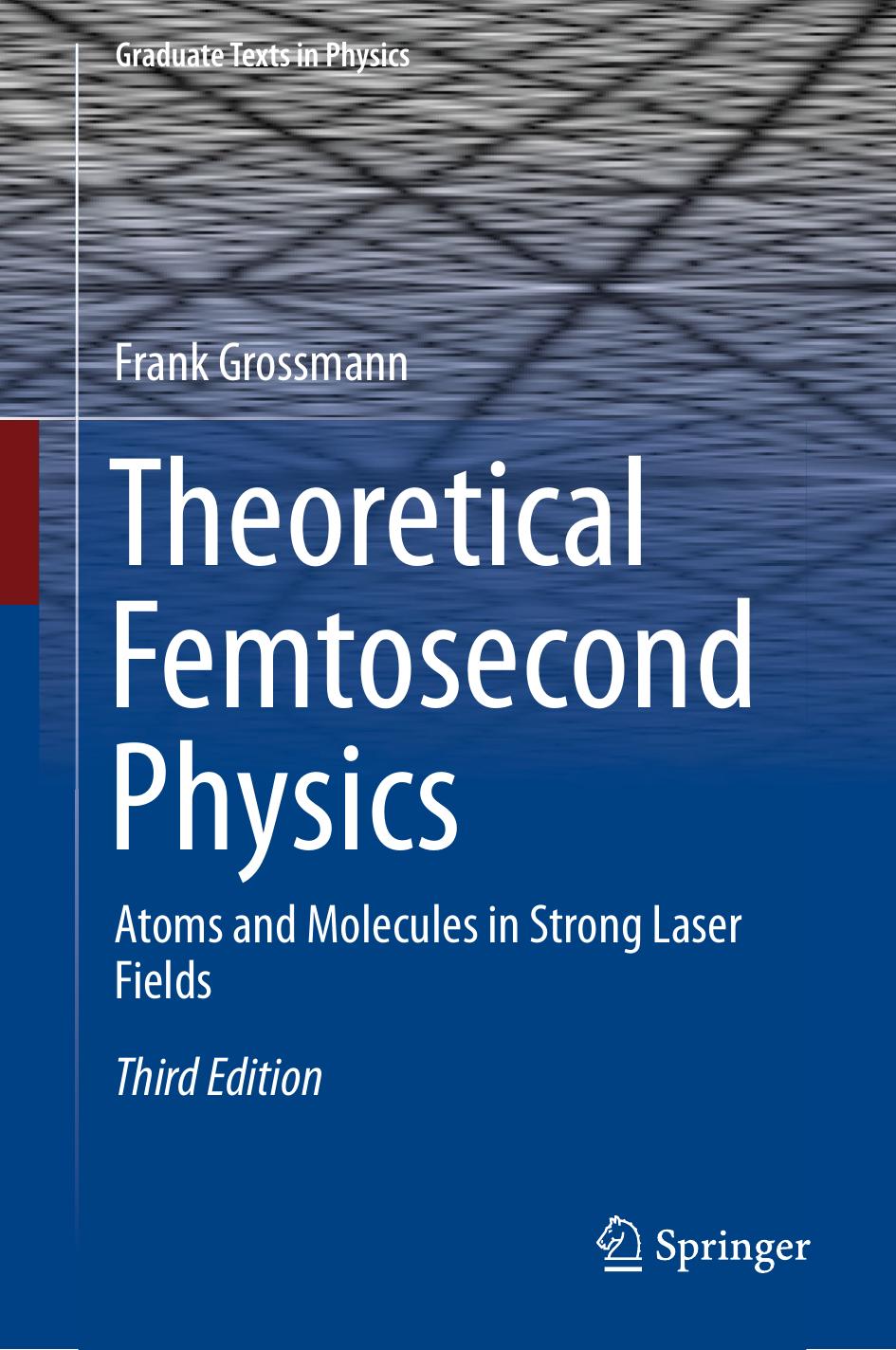Theoretical Femtosecond Physics by Frank Grossmann

Author:Frank Grossmann
Language: eng
Format: epub, pdf
Publisher: Springer International Publishing, Cham
4.4.2 Low-Energy Structure
In an experimental study of electron emission on rare gas atoms, using 40 fs laser pulses with 630 nm central wavelength and peak intensities up to 4.4 10 W/cm, the results displayed in Fig. 4.23 have been found. The sharp ATI peaks are blurred into a continuous distribution at this high laser intensity and a plateau in the generation of the photo-electrons builds up (see inset in Fig. 4.23), which is most clearly visible for Ar and Xe gases [47]. It was lateron shown that the cutoff of this so-called ATI plateau is at around 10 [48], because this is the maximal energy that an electron can acquire after recollision (see also Fig. 4.22).
A surprising detail in the photo-electron emission was measured in the forward direction along the laser polarization axis for atoms (and also molecules) irradiated by long wavelength lasers (m) such that the Keldysh parameter is well below unity [49]. On top of the prediction of the strong-field KFR approximation, a maximum is located at low energies, see Fig. 4.23. This maximum has been dubbed “low-energy structure” (LES).
Fig. 4.23Low-energy structure (LES) in photo-electron yield under 150 TW/cm, 2 m pulses with on top of the strong field (KFR) prediction in the photo-electron spectrum of atomic argon and two molecular species. The inset shows a wider energy range with the recollision induced ATI plateau [49]. is the high energy limit at which a break in the slope of the yield curve exists
Download
Theoretical Femtosecond Physics by Frank Grossmann.pdf
This site does not store any files on its server. We only index and link to content provided by other sites. Please contact the content providers to delete copyright contents if any and email us, we'll remove relevant links or contents immediately.
The Complete Stick Figure Physics Tutorials by Allen Sarah(7336)
Secrets of Antigravity Propulsion: Tesla, UFOs, and Classified Aerospace Technology by Ph.D. Paul A. Laviolette(5332)
Thing Explainer by Randall Munroe(3909)
The River of Consciousness by Oliver Sacks(3571)
The Order of Time by Carlo Rovelli(3162)
How To by Randall Munroe(3074)
A Brief History of Time by Stephen Hawking(2991)
I Live in the Future & Here's How It Works by Nick Bilton(2958)
What If?: Serious Scientific Answers to Absurd Hypothetical Questions by Randall Munroe(2667)
The Great Unknown by Marcus du Sautoy(2661)
Midnight in Chernobyl by Adam Higginbotham(2515)
Blockchain: Ultimate Step By Step Guide To Understanding Blockchain Technology, Bitcoin Creation, and the future of Money (Novice to Expert) by Keizer Söze(2466)
Networks: An Introduction by Newman Mark(2382)
The Meaning of it All by Richard Feynman(2318)
Easy Electronics by Charles Platt(2307)
The Tao of Physics by Fritjof Capra(2247)
Midnight in Chernobyl: The Untold Story of the World's Greatest Nuclear Disaster by Adam Higginbotham(2195)
When by Daniel H Pink(2098)
Introducing Relativity by Bruce Bassett(2097)
